Deb Vanasse's Blog: Book Birthday!
April 26, 2016
Looking for updates?
Looking for recent posts by Deb? You'll find them at www.coastwriting.org. She's also a regular contributor on publishing at the
IBPA Independen
t and on the craft of writing at www.49writers.blogspot.com.
For exclusive offers and the latest on Deb's writing, sign up for Deb's Book News.
For writing and publishing advice, see Write Your Best Book and What Every Author Should Know.
Have a question for Deb? Email her at info (at) debvanasse.com.
Thanks for reading!
For exclusive offers and the latest on Deb's writing, sign up for Deb's Book News.
For writing and publishing advice, see Write Your Best Book and What Every Author Should Know.
Have a question for Deb? Email her at info (at) debvanasse.com.
Thanks for reading!
Published on April 26, 2016 08:56
April 12, 2016
Beyond the Book Launch: How an Author Exchange Can Expand Your Audience
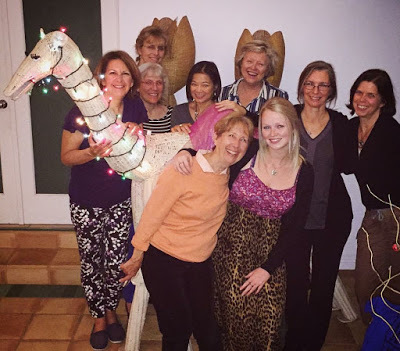 Exchange Authors: Front row, L to R: Kitty Morse, Kenna Jones. Middle row, L to R: Susan McBeth, Debbie Moderow, Marivi Solivan, Marybeth Holleman, Deb Vanasse. Back row, L to R: Kaylene Johnson, Kathi Diamant. Camel is a longstanding fixture at the Moroccan-style home of Kitty Morse.
Exchange Authors: Front row, L to R: Kitty Morse, Kenna Jones. Middle row, L to R: Susan McBeth, Debbie Moderow, Marivi Solivan, Marybeth Holleman, Deb Vanasse. Back row, L to R: Kaylene Johnson, Kathi Diamant. Camel is a longstanding fixture at the Moroccan-style home of Kitty Morse.Does there exist anywhere an author who suffers from too many readers? Um, no. One of the primary difficulties of making your way as a writer comes in expanding your audience, especially after the launch buzz for your book fades.
With the idea of creating novel opportunities for authors to connect with their readers, Susan McBeth founded Adventures by the Book. In addition to hosting “Meet the Author” events and book-themed travel adventures, she’s piloting an author exchange opportunity as a potential component of her AuthorPreneurs™ program.
For the pilot, Susan chose three authors from San Diego to host three authors from Anchorage, with her and I acting as event coordinators and liaisons. From April 3 to April 8, the Alaska contingent descended on San Diego, where they reached new readers through unique events that Susan tailored for their books.
Of equal value were the home stay experiences and social gatherings. In the company of their hosts, visiting authors Marybeth Holleman, Kaylene Johnson, and Debbie Moderow enjoyed warm hospitality, enthusiastic conversations, culinary delights prepared by an acclaimed food writer, and California sunshine.
A sampling of the outside-the-box events Susan arranged for the visiting authors, with the help of her assistant, Kenna Jones:
· Welcome dinner of Moroccan cuisine prepared by food writer Kitty Morse
· “Among Wolves” San Diego State University Osher Institute of Higher Learning at the California Wolf Center, including an on-foot observation walk and an author talk by Marybeth Holleman
· Qualcomm (San Diego’s largest employer) International Women’s Day event featuring Debbie Moderow and her book Fast into the Night
· “Our Wild Alaska” author panels at the Coronado City Library and the Carlsbad Library. In Coronado, attendees bought stacks of books; in Carlsbad, the room was full!· “Striking It Rich,” a San Diego State University Osher Institute of Higher Learning at Mission Trails Park, featuring a one hour presentation by yours truly, followed by a gold-panning activity hosted by the Southwestern Miners & Prospectors Association.· Invitation-only networking reception with San Diego authors at Susan’s home · Lunch event celebrating the 100th anniversary of the National Park Service at Kahala Travel, featuring a presentation by Kaylene JohnsonJudging by the response of the authors and readers involved in these events, this first portion of the pilot was an overwhelming success. Here's hoping there's an author exchange in your future!
Published on April 12, 2016 14:15
March 29, 2016
The Vulnerable Writer
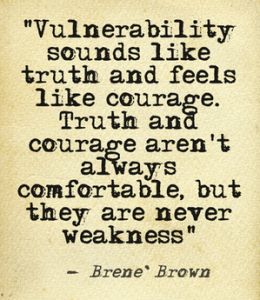 Image from www.monahaydar.com
Image from www.monahaydar.comDon’t get me wrong—I love writing. But in nearly twenty years of writing and publishing, I’m also well aware of the pitfalls of a writer’s existence, the cumulative effect of which results in discouragement and thoughts of quitting, even for the cheeriest types.
On many fronts, writers are vulnerable. But this isn’t all bad. Yes, Maslow identifies safety and security as primary human needs. But risk is inherent to creativity, and when you put yourself out there, you’re going to feel vulnerable. Vulnerability also has much to do with why we travel, putting ourselves outside our so-called comfort zones. It also has much to do with why we read—on the page, we experience vicarious vulnerability without compromising our safety.
Safety and security benefit with individual, but vulnerability furthers us collectively, as a culture and as a society. It certainly enhances our creative work. “A big part of writing is developing the capacity to expose yourself on the page,” says Steve Almond. Where we feel most ashamed, most vulnerable, we are also most likely to connect with our readers.
In “You and Your Characters,” literary agent Donald Maassurges authors to find the points of connection between themselves and their protagonists—and to delve deep into these parallels by probing shared vulnerabilities. “What fear is closest to your own darkest dread?” he prompts writers to ask. “What decision has an impossible cost, a cost you’ve paid yourself?”
In a talk I gave yesterday at Beach Books, I spoke of how vulnerability works into two titles that, on the surface, appear to be quite different. In the novel Cold Spell , a husband leaves his wife and young daughters. Vulnerable and exposed, the wife becomes obsessed with a glacier and the latent power bound up in ice, while the daughter struggles with the vulnerability and power in her sexual coming of age.
Because I write less from ideas than from voice and character, I wasn’t thinking of any connecting points from this novel to Wealth Woman , the biography of a nineteenth century Native woman, Kate Carmack. In subsistence cultures like Kate’s, hunting and foraging involve more inherent vulnerability than in well-established agrarian or industrial societies.
The stories Kate grew up with were thus more about avoiding risks than taking them. When we live in relative safety, we can afford to be attracted to risk. Yet Kate made herself vulnerable for the sake of her community, and her community in turn became vulnerable as outsiders stampeded in search of wealth—wealth that on the surface would appear to bring safety and security but which in many ways makes us more vulnerable.
In my writing—and I trust in yours—these ideas reveal themselves after the fact, as the characters, real or fictional, spin themselves out on the page. If you want depth in your work, you can’t afford to go easy on your characters. You can’t coddle them.
“I want characters at the end of their ropes,” Almond says. “It’s far too late in the history of our species for sophisticated poses.”
Published on March 29, 2016 06:00
March 22, 2016
Keep Writing or Quit?
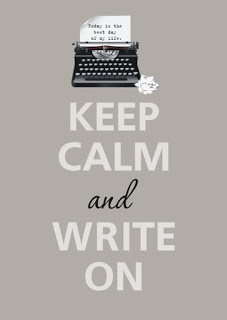 Or not? Image from www.henryharbor.com
Or not? Image from www.henryharbor.com Discouraged by a year’s worth of manuscript circulation, revisions, and rejections by the A-list of editors selected by her literary agent, a friend is pondering whether to abandon what has been up until now her life’s pursuit. She’s already had success with one book and scores of short-length work, but the strain of trying to break through with a second title is taking a toll.
There are practical, logistical ways of addressing her quandary—she could try smaller publishers, work on other manuscripts, self-publish. But her larger dilemma presents itself to most of us at one time or another: Do I keep writing or quit?
I’ve been at this a long time—next year marks the 20th anniversary of the release my first major title, A Distant Enemy . As is the case with most writing careers, it’s been an up-and-down journey of successes, discouragement, breakthroughs, and missteps. I can’t claim easy ways to decide how long any of us should continue to do what we do, but there are important questions to consider:
Why are you writing?For authors such as Marilyn Sewell, writing is a calling. Others have a single project that needs to come out, and once it’s released, they don’t feel compelled to continue.
What does success mean to you? To address this question, I suggest you write for a few minutes about the fantasies connected with your writing life If in five years, each and every one of your writer’s dreams were fulfilled, how would it all look, in terms of income, recognition, your body of work, and how you spend their time. Then take a few minutes to consider each of those areas—income, recognition, body of work, and how you’d be spending time—in terms of what you realistically think you can achieve within five years. Through this exercise, you can learn a lot about what defines success for you: money, fame, awards, the work itself, the creative life. You may also find that some of your ideas about what would make you feel successful are misguided—either internalized from others or skewed toward factors over which you have no control. When measured in terms of what actually matters to you, your writing may be delivering success in ways you’re failing to recognize.
Business or art? Where you place yourself on the continuum between business and art affects your level of satisfaction with your work. Some writers love the business angle and insist that to be successful, all must embrace it. But while it may be impossible to publish and get away from the business part altogether, who says writers must publish at all? Some of the happiest writers I know are those who don’t care about sharing their work beyond a small circle of friends.
Which stories need to be told? If your passion for a particular project is strong, get it out in the world when you’re certain it’s ready. But remain open to the possibilities for sharing it—the process by which readers find it may be different from what you first envisioned, or the timing may be at odds with what you’d hoped.
How would your life change if you didn’t write? If your days would fill with other passions that bring you more joy, your decision is easy. And bear in mind that no matter how long you’ve pursued it, writing isn’t your identity if you can happily embrace the prospect of a life without it. There’s no shame in abandoning a pursuit without having achieved every goal you’d hoped for—that’s simply a fact of life.
Deb Vanasse is the author of seventeen books with six different presses. For more on the writing life, see Write Your Best Book.
Published on March 22, 2016 06:00
March 15, 2016
Twitter for Writers
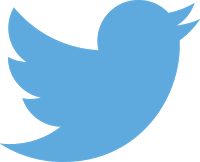
When it comes to social media, I’m a big believer in doing what’s useful, helpful, and enjoyable for you—and that’s it. But I’m also an advocate for keeping an open mind about which platforms will fit the bill.
In what seems like another lifetime, I once vowed never to text. If I had something to say to someone, we’d have a conversation. Then my son told me about some great photos he’d taken, photos he would have shared with me if I texted.
Photos? I was so dumb about texting that I didn’t realize they were part of the package. I redrew the proverbial line. I’d text, but I’d never tweet.
Before long, I again proved the truth of that old adage never say never. A fellow writer convinced me to try Twitter, and I discovered it’s a great fit for me. In five or ten minutes a day, I stay informed about what’s going on with friends, fans, fellow writers, and publishing news. Unlike certain other platforms (are you listening, Mark Zuckerberg?), what I see isn’t controlled by algorithms—I make those choices myself. I can have multiple accounts under one email address. And Twitter cleans up now and then, casting out scammy followers.
But to have a good Twitter experience, you have to do it right. Here, some tips:
Getting started: Go to twitter.com. Open your account, choose your handle, which is the equivalent of your Twitter address. For most of us the best handle is first and last name, or whatever variation of that isn’t already taken. For instance, my handle is @debvanasse. In your profile, describe yourself in 140 characters or less (and don’t worry – Twitter will tell you when you’re over the limit, so you can adjust). Upload a photo of yourself (lest you literally look like an egghead) and a background photo.
Follow and get followed: The best way to get followers on Twitter is to follow like-minded people. That’s because if you’re an average person using Twitter—not a celebrity, not a scam artist—there’s follow-back etiquette, meaning that when you follow a person like yourself (not a celebrity, not a scam artist), that person will likely follow you back. To find people to follow, visit the account of someone whose interests are similar to yours, and follow the people whom that person follows. You can do this quickly and easily by using the “copy followers” feature at Crowdfire (www.crowdfireapp.com). Also use Crowdfire to unfollow people who don't follow you—some spammy-types follow and then unfollow as a way of ratcheting up their numbers.
Know the basics: When you post on Twitter, that’s tweeting (not twittering, as you might hear others say, or twerking, which is something entirely different, which we won’t go into here). You can put a hashtag (#) in front of any word in a tweet to create a searchable term, and in turn you can use the search icon (the magnifying glass), to search for what others are saying about a topic that interests you, say #gardening or #publishing. Your search results will show you which hashtags are most popular; for instance, #gardenchat is more popular than #gardening, and #amwriting is more popular than #writing. When you read a post you like, tap the heart. Twitter is all about sharing, so when you read a post you want to share, you can retweet (RT) it by clicking the icon with arrows. Everything you tweet and retweet will show up in your feed, which others will see if they look at your Twitter page. To send a direct message (DM) to someone, start the tweet with his or her handle (@). When you mention someone (MT) anyplace but at the beginning of a tweet (or with a period in front of the @ at the beginning – that’s a sneaky what to share what otherwise appears to be private), everyone will see.
Use lists: If you learn only one thing about Twitter, let it be this: disregard your feed. Instead, make private topical lists based on your interests, and only include in those lists people whose tweets you really want to see. To make a list, go to settings (the gear icon) and click on lists. Create your lists and then edit, manage members. Add and subtract from your lists as you like; as long as you remember to make the list private, no one will know.
Post only value-added information: Posts are for sharing information and thoughts that will actually interest people. Include links to relevant sites and articles. Add photos for visual interest. If you want to chat with a group, agree on a hashtag and include it in your posts.
If you like to post regularly, use a free app to schedule your posts:I use both Hootsuite and Buffer, each for a different handle.
Author of seventeen books published by six different presses, Deb Vanasse teaches on topics related to writing and publishing. She also edits and coaches writers of fiction and nonfiction. After thirty-six years in Alaska, she now lives on the north coast of Oregon. For more social media tips, see this popular post.
Published on March 15, 2016 06:00
March 8, 2016
When���and How���Should You Publish?
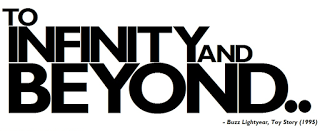 from http://2-infinity-and-beyondxx.tumblr...
from http://2-infinity-and-beyondxx.tumblr...A short story by a relatively unknownauthor gets top billing with a major urban news outlet. Sounds like fantasy,right?
Last week, KGWPortland, opened 6 pm news with an author reading from his recentlypublished speculative fiction, an unconventional short story set in the momentsfollowing a big Cascadia earthquake.
Disasters���even fictional ones���tend topique interest, and people in Portland are understandably interested in aseismic event that could potentially destroy their city, but there���s morebehind how this particular story got noticed. Author Adam Rothstein opted topublish ���Five Minutes��� on Motherboard, an online magazine and video channel. Thefirst of a five-part series, the story opens on a page featuring an image thatundulates the way the land does during a major quake, an effect you can���t achievein traditional print or even in e-book format.
For the IBPA Independent ,I���m working on an article called ���Updates from the Digital Frontier.��� As Iinterview publishing experts, it���s clear that much conventional thinking aboutwhen and how to publish needs to be refreshed.
When the meteoric rise in e-book salesslowed, sighs of relief sounded from many corners of the industry. Revolutionover, frontier closed. We could all go back to business as usual.
According to digital publishing experts, nothingcould be further from the truth. When pondering how to publish, these expertssay, we should be thinking beyond the traditional book, either print ordigital. We should be thinking beyond containers. We should be thinking insteadabout purpose and audience, and then about seeking the best means of reaching these,regardless of how unconventional. Rothstein, it seems, did exactly that.
What Marshall McLuhanasserted decades ago���that the medium is the message���applies now more thanever. But even as options expand, certain aspects of when to publish���and how���remainevergreen. The ability to view your work with a certain degree of objectivityis one indicator that you���re ready to think about publishing. Another is thatyou have a good understanding of your audience and purpose, allowing you toassess which formats and approaches to publishing will be most appropriate foryour project.
Long ago, we used to say that when you couldenvision your book on a shelf, you might be ready to pursue publication. Thesedays, that visioning might not involve a shelf at all. Instead, the best way toreach your audience and achieve your purpose might be via an app or an enhancedwebsite. It might even be a short story that turns up on the evening news.
Forauthors who want to know more about their publishing options and how they canknow when their projects are ready, Deb has written WhatEvery Author Should Know and WriteYour Best Book. She hasn���t yet figured out how to get these projects topbilling on the 6 o���clock news, but she���s working on it.
Published on March 08, 2016 06:00
When—and How—Should You Publish?
 from http://2-infinity-and-beyondxx.tumblr...
from http://2-infinity-and-beyondxx.tumblr...A short story by a relatively unknown author gets top billing with a major urban news outlet. Sounds like fantasy, right?
Last week, KGW Portland, opened 6 pm news with an author reading from his recently published speculative fiction, an unconventional short story set in the moments following a big Cascadia earthquake.
Disasters—even fictional ones—tend to pique interest, and people in Portland are understandably interested in a seismic event that could potentially destroy their city, but there’s more behind how this particular story got noticed. Author Adam Rothstein opted to publish “Five Minutes” on Motherboard, an online magazine and video channel. The first of a five-part series, the story opens on a page featuring an image that undulates the way the land does during a major quake, an effect you can’t achieve in traditional print or even in e-book format.
For the IBPA Independent , I’m working on an article called “Updates from the Digital Frontier.” As I interview publishing experts, it’s clear that much conventional thinking about when and how to publish needs to be refreshed.
When the meteoric rise in e-book sales slowed, sighs of relief sounded from many corners of the industry. Revolution over, frontier closed. We could all go back to business as usual.
According to digital publishing experts, nothing could be further from the truth. When pondering how to publish, these experts say, we should be thinking beyond the traditional book, either print or digital. We should be thinking beyond containers. We should be thinking instead about purpose and audience, and then about seeking the best means of reaching these, regardless of how unconventional. Rothstein, it seems, did exactly that.
What Marshall McLuhan asserted decades ago—that the medium is the message—applies now more than ever. But even as options expand, certain aspects of when to publish—and how—remain evergreen. The ability to view your work with a certain degree of objectivity is one indicator that you’re ready to think about publishing. Another is that you have a good understanding of your audience and purpose, allowing you to assess which formats and approaches to publishing will be most appropriate for your project.
Long ago, we used to say that when you could envision your book on a shelf, you might be ready to pursue publication. These days, that visioning might not involve a shelf at all. Instead, the best way to reach your audience and achieve your purpose might be via an app or an enhanced website. It might even be a short story that turns up on the evening news.
For authors who want to know more about their publishing options and how they can know when their projects are ready, Deb has written What Every Author Should Know and Write Your Best Book. She hasn’t yet figured out how to get these projects top billing on the 6 o’clock news, but she’s working on it.
Published on March 08, 2016 06:00
March 1, 2016
Author Success: The E-Newsletter
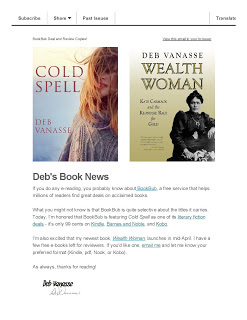
Last week, I wrote about how successful authors handle website development and maintenance. This week, I’m following up with tips about the e-newsletter.
Authors don’t have to have newsletters—or websites, for that matter. The only thing authors absolutely have to have is a book. But if you want readers—well, there’s the rub.
An e-newsletter does for your fans what a Facebook post does for your friends—it lets them know what’s happening with you that’s of interest and value to them. Social media is great for sharing news, but you have no control over which of your friends or followers will actually see your posts. In contrast, e-newsletters arrive via the inbox of each of your fans. If the news isn’t of value or interest, those folks will let you know by unsubscribing, a feature that by law must be included in every e-newsletter (and for that matter, in every promotional email that’s sent to a group).
Among the best practices for e-newsletters:
Professional platform:When you create and send your e-newsletters via a platform such as MailChimp or Constant Contact, you’ll minimize design time and maximize the benefits. Analytics embedded in the platform will help you tweak your campaigns, and your lists will be automatically culled of unsubscribers.
Sign-ups: By law, you must tell subscribers why they’re receiving the e-newsletter. The best reason is that they’ve asked to receive it, by signing up at an author event or on your website. The next best is that they’ve indicated an interest in your work. Don’t inflate your list by adding every person on your contact list. Keep in mind that the ripple effect from a negative impression is ten times greater than from a positive interaction. And don’t require a sign-up in order for someone to access your website. That’s bad form, plain and simple. A sign-up tied to a free offer for something of value works only if the content of the free offer is closely tied to the sort of information you’ll be providing in the e-newsletter.
Content: All of us are drowning in information, so make so yours is relevant to your reader. The key is to make sure it’s value-added—that the recipient actually benefits in multiple ways from opening and reading your e-news. Less is more. Embed links (to your website, preferably) for those who want to read more. And while social proof is great, your fans will quickly tire if your “news” is just bragging.
Frequency: In general, recipients don’t care whether your newsletter arrives on a particular day of the week or month, or even whether you send one each week or each month. The exception: if you’re reaching a particular audience with particular information that might otherwise be posted in a blog—in which case, you’re better off just offering an RSS feed option on your blog. A big reason for sending a newsletter is to remind your fans that you’re out there doing what you love—writing books that they’ll love. If your newsletter’s hitting the mark, you’ll receive personal correspondence from a few of your fans each time it goes out.
Author of seventeen books published by six different presses, Deb Vanasse teaches on topics related to writing and publishing. She also edits and coaches writers of fiction and nonfiction. After thirty-six years in Alaska, she now lives on the north coast of Oregon.
Published on March 01, 2016 06:00
February 23, 2016
Websites: What Writers Need to Know
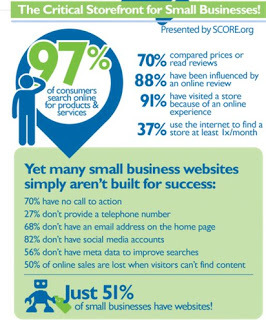 Writers are business people too! Infographic from SCORE
Writers are business people too! Infographic from SCORE (https://www.score.org/resources/what-you-need-know-about-websites)
The internet offers incredible resources for building an audience and promoting your work. Without spending loads of time and money, you’d love to tap into those that best fit your skills and purposes. But with so many options—and so much confusing tech-speak—it’s hard to know where to start.
This week, I’m slated to teach a workshop on websites and electronic newsletters, two foundational strategies for every artist and writer. Whether you’re starting from scratch or looking to refresh your web presence, here are some of the tips and strategies for enhancing your web presence:
Evaluate: In terms of aesthetics, traffic, content, and investment of money and time, take a considered look at your current web presence and practices versus the presence and practices you desire.Purpose: Whom do you most hope to reach? What outcomes would you most like to achieve? The answers to these questions should be the foundation of your web strategies.Best Practices: Design your website and newsletter with users in mind. With regard to text and special effects, the “less is more” adage prevails. Choose a smart URL, link wisely, make sure you’ve got good mobile optimization, and attend to SEO and SERP concerns. Develop content that you can tap for multiple purposes. Make sure everything is clean, correct, and up-to-date.Guard your investment: Don’t let a website or newsletter consume inordinate amounts of time and/or money. Secure your site against hackers. Avoid scams by never clicking through on links embedded in emails, even those that arrive via your website. Evaluate: Don’t obsess over your analytics, but study them periodically to determine which web practices you should continue and which you should modify or cut.
Author of seventeen books published by six different presses, Deb Vanasse teaches on topics related to writing and publishing. She also edits and coaches writers of fiction and nonfiction. After thirty-six years in Alaska, she now lives on the north coast of Oregon between Astoria and Seaside.
Published on February 23, 2016 06:00
February 16, 2016
Romancing the Book: What Writers Should Expect
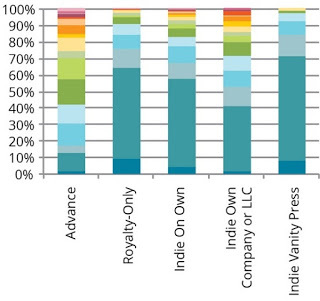 Source: Digital Book World, Jan. 15, 2016
Source: Digital Book World, Jan. 15, 2016A comedian quipped that romance can be a lot like school—eager, bright-eyed anticipation succumbs to mundane and sometimes dissatisfying realities. Which is not to say that romance—or school—should be avoided, only that a person eventually needs to adjust her expectations.
A significant subset of the population, writers somehow are wooed into the intense and potentially frustrating enterprise of creating books. Seduced by the idea of how wonderful it must be to publish, they can end up shattered by the results.
Cling to your initial expectations, and in all likelihood you’ll be disappointed. But it doesn’t have to be that way. Just as you adjust to the realities of school and of marriage, you can adjust to the realities of publishing:
Book sales won’t make you rich:Don’t take my word for it—check out the results of the most recent author survey by Digital Book World. Of those who responded, traditionally published authors who earned an advance on their last book reported the highest net proceeds from the sales of that book: $5,000 to $10,000. Publishing through their own companies, indie authors saw the next highest median returns from their latest book: $500 - $1,000. Bumping bottom: solo authors, who reported median returns of $0 - $500 on their latest book.
Discoverability is difficult: Even when publishers invest big bucks, there’s no guarantee a book will be discovered. There’s a whole lot of noise out there, and shouting doesn’t mean you’ll be heard.
Effort is required:Writing may be joyful, but it’s not easy, especially if you intend to do it well.
Writers support one another:Though the competition for readers is fierce, writers are a supportive bunch. They’re also smart, and a lot of fun to hang out with.
For intrinsic rewards, writing is tough to beat: Analogies of romance and education again come to mind. Money aside, the rewards are beyond measure—new understandings of yourself and the world, deep satisfaction, contributions that endure.
Co-founder of 49 Writers and founder of the independent authors cooperative Running Fox Books, Deb Vanasse has authored sixteen books. Her most recent are Write Your Best Book, a practical guide to writing books that rise above the rest; What Every Author Should Know, a comprehensive guide to book publishing and promotion; and Cold Spell, a novel that “captures the harsh beauty of the terrain as well as the strain of self-doubt and complicated family bonds,” according to Booklist. Her next book, Wealth Woman: Kate Carmack and the Klondike Race for Gold, comes out in April, 2016. She is also a staff writer for the IBPA Independent.
Published on February 16, 2016 06:00
Book Birthday!
Happy Birthday to my latest book, https://www.goodreads.com/book/show/5...! Thanks to West Margin Press for bringing it into the world and to authors C.B Bernard, Bill Streever, Gary Krist, Caroline V
Happy Birthday to my latest book, https://www.goodreads.com/book/show/5...! Thanks to West Margin Press for bringing it into the world and to authors C.B Bernard, Bill Streever, Gary Krist, Caroline Van Hemert, and Kim Heacox for their endorsements!
...more
- Deb Vanasse's profile
- 39 followers



